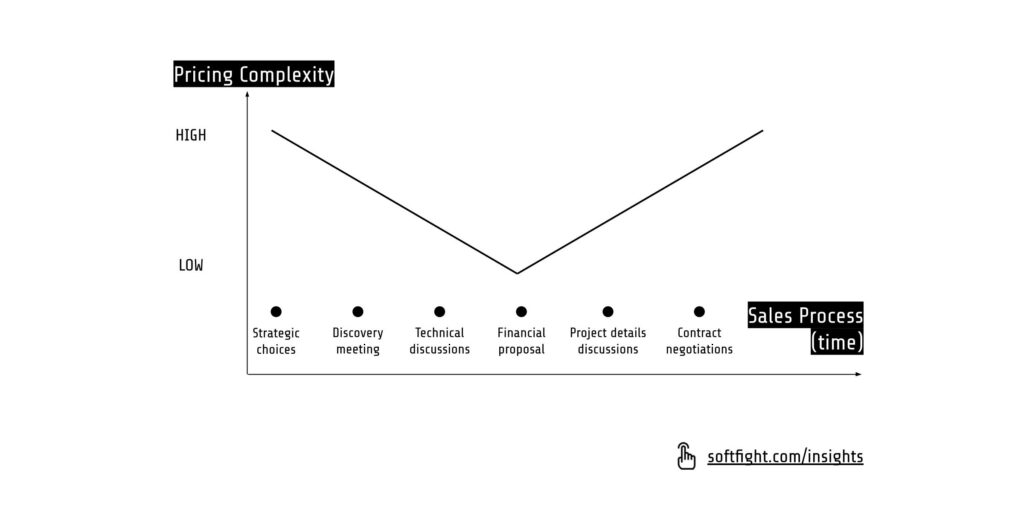Most people I talked to over the years wanted a simple pricing model.
They believed that customers don’t have the time or the attention span to understand complex pricing tables or multiple options.
They were convinced that by having a simple pricing model they will win more customers.
Yes and no.
How software services are different
Simple pricing model that leads to higher sales and revenues might be true for some industries and some contexts.
I can think of streaming services that compete on a global scale (Netflix, Spotify), commodity goods that are sold in large volumes with low margins (basic construction materials) or street food.
What all these have in common:
- Large numbers of potential customers and volume of transactions
- Very short sales cycles, with decisions taken in a matter of minutes (or even seconds)
- High number of competing alternatives, with little differentiation between them
These are the main factors that lead to a simple pricing model that is also optimum.
What about software services?
- Relatively low number of potential customers and contracts signed every year
- Long sales cycles, complex decision for the buyers, with multiple people involved in the buying process
- Relatively low number of similar alternatives (each client evaluates 3 to 7 vendors, of which not all will have the right skills, availability and delivery process suitable for that project)
What is a simple pricing model
I’ll take some examples from a Google search results:
- “What is the simplest pricing strategy? Since you only need to add up the cost to make your product and add a percentage to it, cost-plus pricing is the simplest form of pricing to use.”
- “Simple pricing involves charging what competitors charge for similar services.”
- “A flat subscription model is simple: one service, one price. It’s the all-inclusive vacation of pricing models.”
A simple pricing model for software services is certainly appealing.
This typically means a rate card table, with hourly rates for different roles and seniority levels, that is sent to the customer early in the sales process, with the basic message “pick what you want from here”.
What a simple pricing model also means for software companies: lost revenues.
A simple pricing model means that you will offer low prices to a customer that might be willing and capable to pay more for the value you deliver.
It can also mean to offer a price that is too high for a project where it might make economical sense for you to charge less, thus losing a project you could have won.
A simple pricing model means that the focus of the sales conversation will be mostly on price and not on the specifics of the project and the value you can provide.
A simple pricing model will not take into account the different risks, timelines or necessary skills associated with the different projects that you are competing for.
A template for pricing simplicity (or complexity)
If there is one moment in the sales process where it makes sense to optimize for simplicity so as to maximize your chances of winning the project, that moment is when the buyer makes the decision.
If you sell to large companies with multiple people in a buying committee, the “buying decision moment” is after they have gathered all the offers from all vendors, they have clarified and quantified all aspects of the offers and are in an internal meeting, trying to decide who to work with.
If you sell to founders of startups, the “buying decision moment” might be much more emotional and personal, for example the call where you present the project plan, even before they see the price – because they feel that this is the right team and process to work with.
For all the other moments in the sales process, it’s ok to have an increasingly complex pricing model and pricing system. (The pricing model is what the customers see. The pricing system is the pricing model + all other internal aspects of pricing: segmentation, calculation algorithms, discount rules, etc.)
This is a visual representation of the mental model I have been using for years:

WHAT THIS MEANS FOR YOU
You have to be very careful how you use pricing simplicity.
It can easily backfire on you.
Revenues lost through discounts are not visible, because there is no line in your financial report to show them.
It’s the same with revenues lost by using a simple pricing model for selling software services: they are not visible. But they are lost and you can never get them back.

